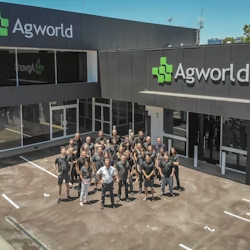‘Stay at home orders’ - it’s fascinating how a term we didn’t really use until a few weeks ago, has become commonplace in our daily lives now. With the exception of essential workers, everyone is trying to stay home as much as possible and remote working has suddenly become a lot more predominant for those professions where this is a possibility.
Within Agworld, we’re fortunate to have the infrastructure and equipment available that allowed us to make this transition rapidly and without issues. We have experienced no service interruptions and, with the help of teleconferencing and other tools, we are managing to create as much ‘normality’ as possible for our 60 colleagues based in 4 countries and 10 different states around the globe.
It’s not only Agworld employees however that have started to work remote, we have noticed the same trend within our client base. Farmers and agronomists are, obviously, essential workers and their jobs continue now, just like they always do. With social distancing and other measures in place however, they too are having to make accommodations to the way they interact with the key stakeholders in the farming process.

What we are seeing is that the ‘kitchen table discussion’ has become virtual, practically overnight out of necessity, and that most growers are now interacting virtually with their employees, agronomists and other advisors. Will the kitchen table discussion move back to pre-covid times once this pandemic is over? I don’t think so; technology will remain part of this discussion moving forward and support the efficiency and scalability of all businesses under significant pressure for the foreseeable future.
Why do I think this? There are a number of reasons, but a telling one closer to home is that already in Agworld we can see collaboration and virtual information exchange taking place at scale. For the first quarter of 2020, our users created 40% more plans, 25% more observations, 65% more recommendations and 60% more work orders compared to the first quarter of 2019. These increases are due to a higher number of active users as well as a higher number of activities per active user.

Why is this happening? When talking to Agworld users, they tell me that being able to cut out in-person communication and stop passing around paperwork is one of the easiest steps they can take to help with social distancing. Growers, agronomists and equipment operators can still perform their duties as usual and, by being able to communicate accurately through a digital platform, they can do so by themselves and without having to run unnecessary risks by having close contact with other people.
Agronomists are able to see a grower’s observations on their iPad or iPhone through Agworld and they are able to get an up-to-date overview of what has happened in each field since their last visit. Agronomists are then able to send all their observations and recommendations to their clients who will receive it, through Agworld, on their iPad or iPhone.

Got what it takes to join the Agworld team? We’re looking for talented individuals to help us deliver innovative solutions in agriculture.
Recommendations get turned into a work order by the grower and get assigned to an equipment operator, who will receive this work order on their iPhone or iPad right in the cab of the machine they're working in. Once the job is finished, the operator turns a work order into an actual, which is now visible to the grower, agronomists and anyone else involved in the farming process.
We all know how closed looped chemical systems lower risk of contamination and risk to health. Similarly, having a closed loop of accurate data available to everyone on-farm has always been important, it has just become very apparent at this specific time. In agriculture, working remotely has a different meaning than in most other industries, but the basic concept of ‘avoiding unnecessary in-person meetings’ is the exact same. Digital tools such as VR, AR, BADS etc. have been available for a while, but the COVID pandemic will see them surface at a faster velocity through necessity.





